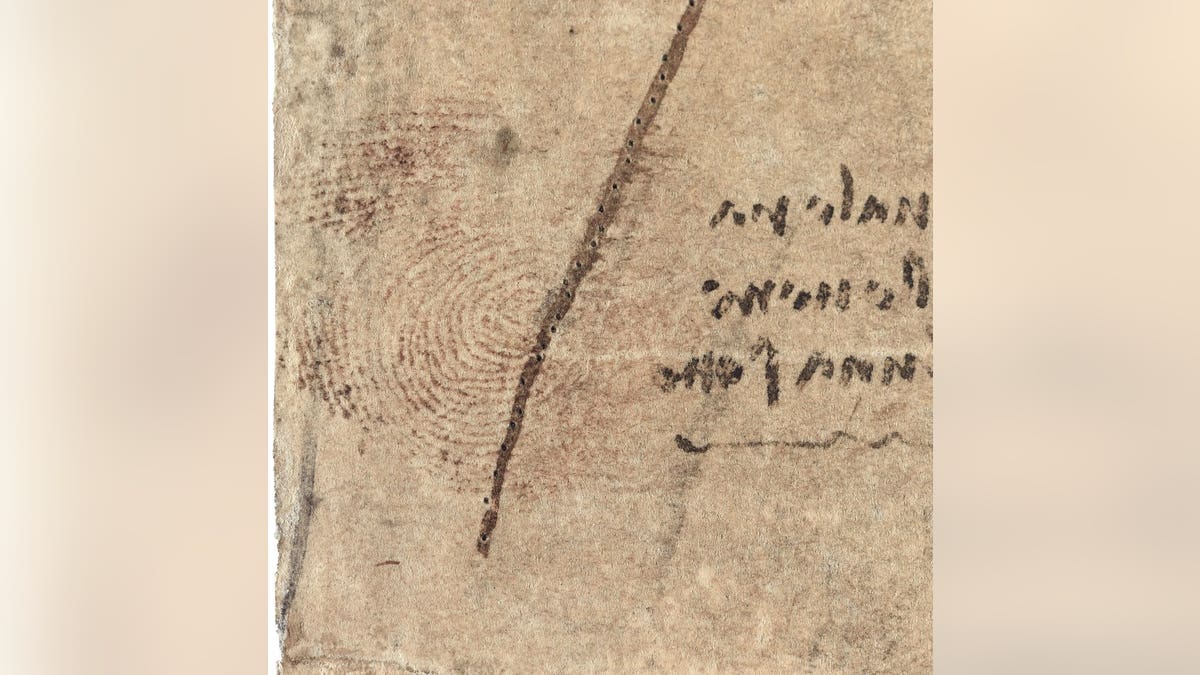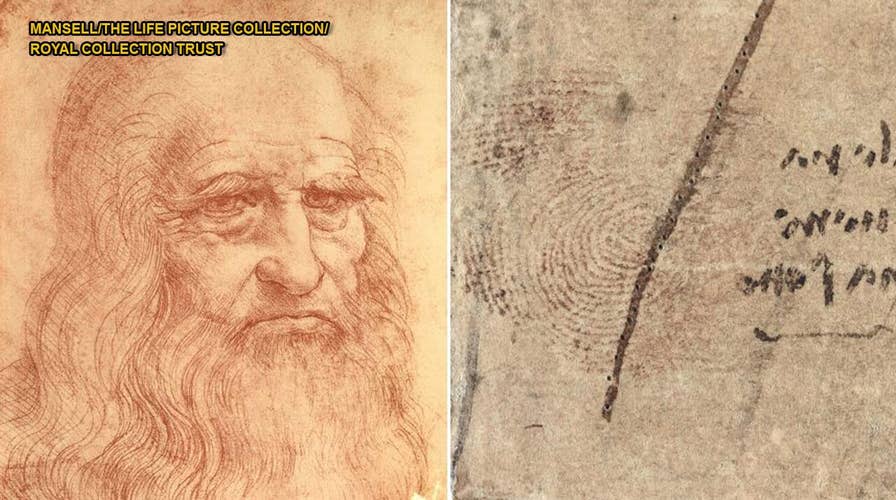Leonardo Da Vinci's thumbprint discovered in drawing owned by Queen Elizabeth
Leonardo da Vinci's thumbprint has been discovered in a drawing by the Renaissance Master that is owned by Queen Elizabeth II. The hidden detail is revealed in a new book 'Leonard da Vinci: A Closer Look.' The thumbprint was found on 'The cardiovascular system and principal organs of a woman,' an anatomical drawing by Leonardo that dates to around 1509 and 1510.
Leonardo da Vinci’s thumbprint has been discovered in a drawing by the Renaissance Master that is owned by Queen Elizabeth II.
The hidden detail is revealed in a new book “Leonard da Vinci: A Closer Look.” The book analyzes 80 of Leonardo’s drawings from the Royal Collection, shedding new light on the famous artist’s craft.
The thumbprint was found on “The cardiovascular system and principal organs of a woman,” an anatomical drawing by Leonardo that dates to around 1509 and 1510.
PICASSO MASTERPIECE REVEALS LOST PAINTING, HIDDEN DETAILS
“At the center of the sheet’s left edge, the print is in the same reddish-brown ink as the ink lines of the drawing,” explains the Royal Collection Trust, in a statement. “It can only be concluded that, after creating the work, the left-handed Leonardo picked up the sheet with inky fingers.”

Detail of Leonardo's work showing the thumbprint (Royal Collection Trust)
The book’s author Alan Donnithorne is the former head of paper conservation at the Royal Collection Trust. In his research, he used X-ray fluorescence, microscopy and ultraviolet imaging to study the drawings.
In the statement, Donnithorne notes that Leonardo used a host of different paper types. A close analysis of “The head of an old bearded man in profile,” a drawing from 1519, shows that the paper contains straw and fragments of rope that the papermaker used to repair the sheet.
SECRET GHOSTLY PORTRAIT OF MARY, QUEEN OF SCOTS, DISCOVERED BENEATH 16TH-CENTURY PAINTING
“The paper of ‘A sketch of the viscera,’ c.1515–16, contains fragments of wood chips, hair, wool and insect parts, possibly sweepings from the mill floor,” explains the Royal Collection, in its statement.

Close up of one of Leonardo's works showing insect parts and wool fibers (Royal Collection Trust)
Other artworks have shown their secrets in recent years. Last year, for example, scientists harnessed sophisticated X-ray and imaging technology to reveal a lost painting and other details hidden in a Picasso masterpiece.
The painting, “La Miséreuse accroupie” (The Crouching Woman), is a major work from Picasso’s Blue Period. High-tech analysis of the 1902 painting, however, revealed how Picasso painted over a landscape by another painter. Buried images linked to other works by Picasso were also found.
VAN GOGH DISCOVERY: PREVIOUSLY UNKNOWN DRAWINGS BY DUTCH MASTER IDENTIFIED
In 2017 a secret ‘ghostly’ portrait of Mary, Queen of Scots was discovered beneath a 16th-century painting. X-ray technology was used to reveal the unfinished portrait of the Scottish Queen, who reigned from 1542 to 1567.

File photo - Sketch of Italian polymath Leonardo da Vinci (1452 - 1519). (Photo by Mansell/The LIFE Picture Collection)
Mary’s portrait was painted over with a portrait of Sir John Maitland, 1st Lord Maitland of Thirlestane. The 1589 painting of Maitland, who was Lord Chancellor of Scotland, has been attributed to the Dutch artist Adrian Vanson.
Da Vinci continues to be a source of fascination for historians.
LEONARDO DA VINCI'S EARLIEST WORK DISCOVERED?
Last summer experts in Italy said they had found the earliest surviving work by Leonardo da Vinci. The small glazed terracotta tile, which bears the date “1471,” is described as a self-portrait of the artist as the Archangel Gabriel.

File photo - A cleaner vacuums in front of a Leonardo da Vinci self-portrait drawn around 1515 or 1516, during the inauguration of the exhibition "Leonardo da Vinci, the European Genius" in Brussels, August 17, 2007. (REUTERS/Francois Lenoir)
The tile’s authenticity, however, has been questioned by noted Leonardo expert Martin Kemp, professor emeritus of the history of art at the University of Oxford.
May 2, 2019, also marks the 500th anniversary of the Renaissance Master’s death.
BRITISH LIBRARY SET TO REVEAL REAL-LIFE 'DA VINCI CODE'
To commemorate the anniversary, the British Library in London is set to showcase a number of Leonardo’s most important notebooks, all written in his famous “mirror-writing.”
CLICK HERE TO GET THE FOX NEWS APP
In addition to using his own shorthand, Leonardo also wrote his personal notes starting on the right-hand side of the page. It is not clear whether this so-called mirror writing was a way to keep his notes private or simply a means to prevent smudging, as Leonardo was left-handed.
The Associated Press contributed to this article.
Follow James Rogers on Twitter @jamesjrogers

